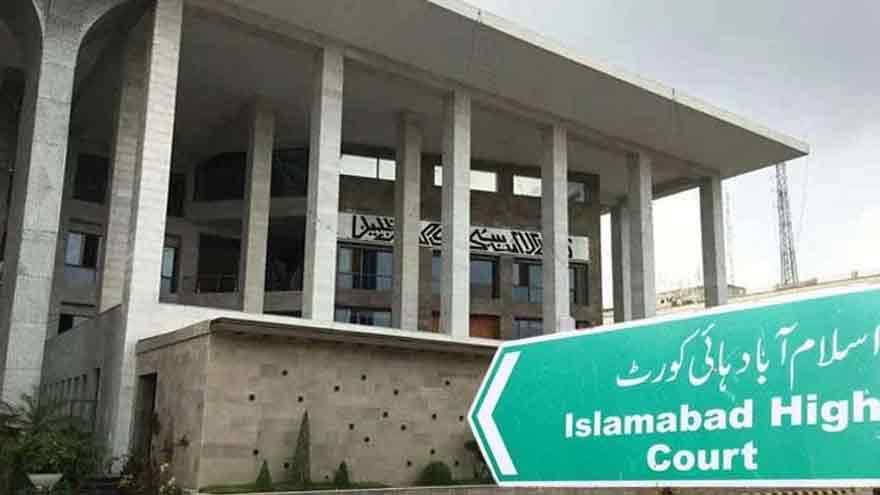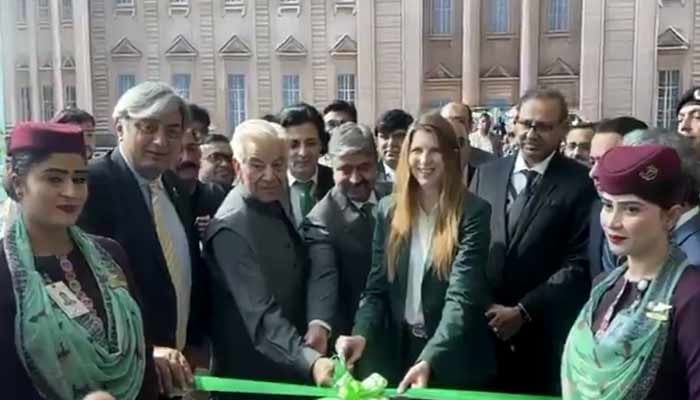Category: 1. Pakistan
-
Interior Minister inaugurates padel tennis court in ICT – RADIO PAKISTAN
- Interior Minister inaugurates padel tennis court in ICT RADIO PAKISTAN
- Interior Minister Mohsin Naqvi Inaugurates Padel Tennis Court and Fitness Arena Associated Press of Pakistan
- Mohsin Naqvi inaugurates Padel Tennis Court in Islamabad…
Continue Reading
-
Pakistan, Iran mull ferry service for pilgrims, traders – Business Recorder
- Pakistan, Iran mull ferry service for pilgrims, traders Business Recorder
- Pakistan and Iran agree to deepen railway cooperation, enhance connectivity Arab News
- Iran, Pakistan agree to facilitate border travel for trucks Mehr News Agency
- Pakistan,…
Continue Reading
-
PIA resumes flight operation for UK – RADIO PAKISTAN
- PIA resumes flight operation for UK RADIO PAKISTAN
- Asif says govt committed to making PIA profitable as national carrier resumes flights to UK Dawn
- Pakistan Airlines restarts UK flights after ban for fake pilot licences The Telegraph
- PIA’s…
Continue Reading
-
Consensus between provinces necessary for unity, says PM Shehbaz – Dawn
- Consensus between provinces necessary for unity, says PM Shehbaz Dawn
- PM Shehbaz Sharif regrets untapped wealth of Balochistan Minute Mirror
- PM for fostering affection, unity to overcome all challenges Associated Press of Pakistan
- PM Shehbaz…
Continue Reading
-
Resurgence of terrorism in Balochistan demands reflection, unity: PM – samaa tv
- Resurgence of terrorism in Balochistan demands reflection, unity: PM samaa tv
- Consensus between provinces necessary for unity, says PM Shehbaz Dawn
- PM Shehbaz seeks hard answers on return of terrorism after ending in 2018 Geo TV
- PM Shehbaz Sharif…
Continue Reading
-
PM announces expansion of Karachi–Chaman Road – RADIO PAKISTAN
- PM announces expansion of Karachi–Chaman Road RADIO PAKISTAN
- Consensus between provinces necessary for unity, says PM Shehbaz Dawn
- PM Shehbaz Sharif regrets untapped wealth of Balochistan Minute Mirror
- Balochistan’s progress key to Pakistan’s…
Continue Reading
-
Asif says govt committed to making PIA profitable as national carrier resumes flights to UK – Dawn
- Asif says govt committed to making PIA profitable as national carrier resumes flights to UK Dawn
- Pakistan Airlines restarts UK flights after ban for fake pilot licences The Telegraph
- PIA’s direct flight to Manchester marks return after…
Continue Reading
-

IHC to hear petition suspension of Imran Khan’s X account
IHC to hear petition suspension of Imran Khan’s X account – Daily Times
Continue Reading
-
Country’s development directly linked with Balochistan: PM – RADIO PAKISTAN
- Country’s development directly linked with Balochistan: PM RADIO PAKISTAN
- Consensus between provinces necessary for unity, says PM Shehbaz Dawn
- Balochistan’s progress key to Pakistan’s prosperity, says PM Shehbaz Dunya News
- Resurgence of…
Continue Reading
